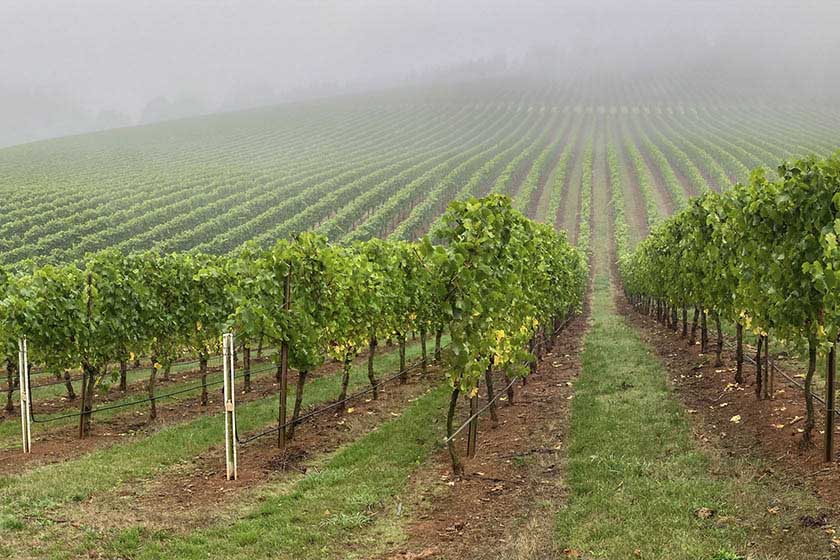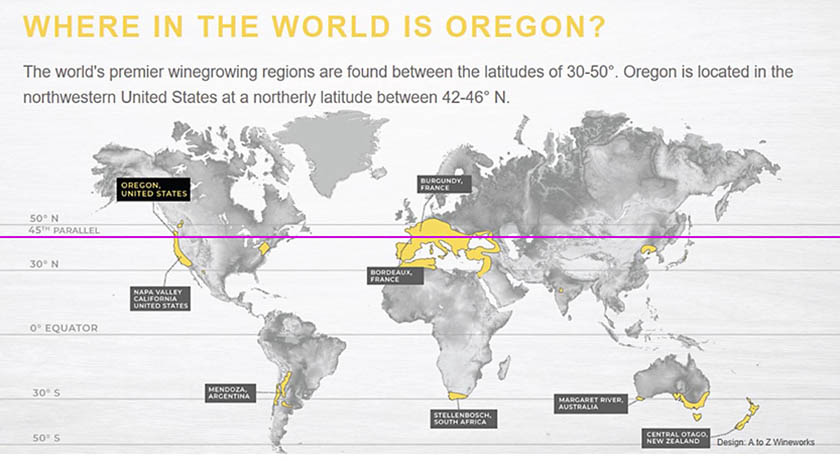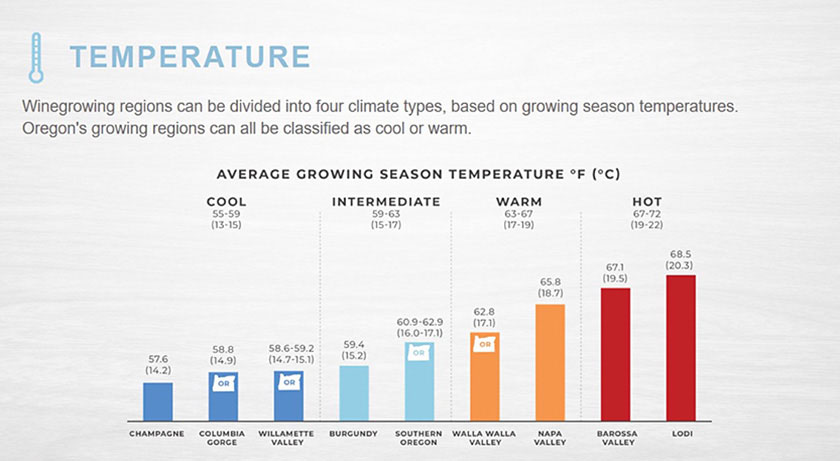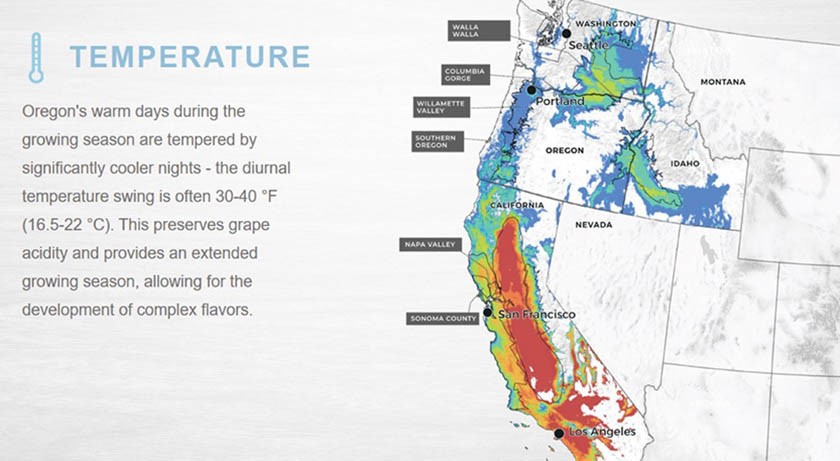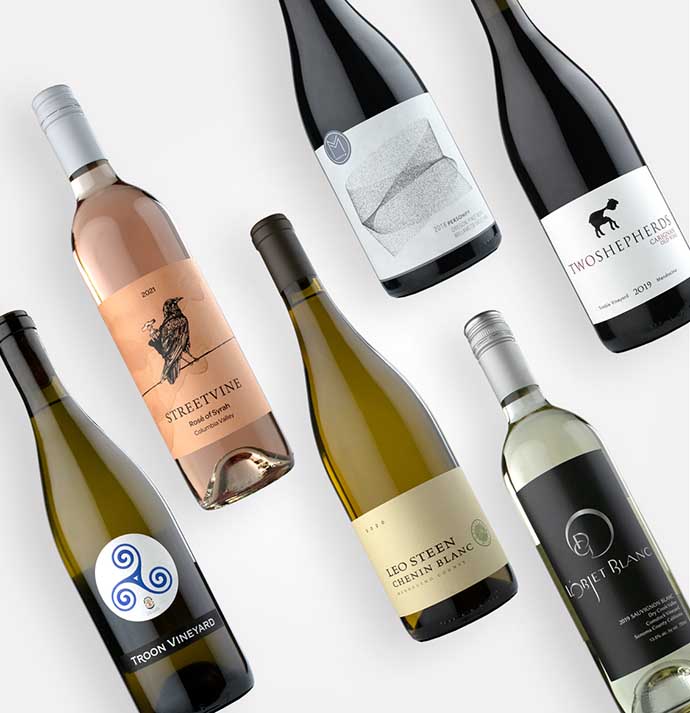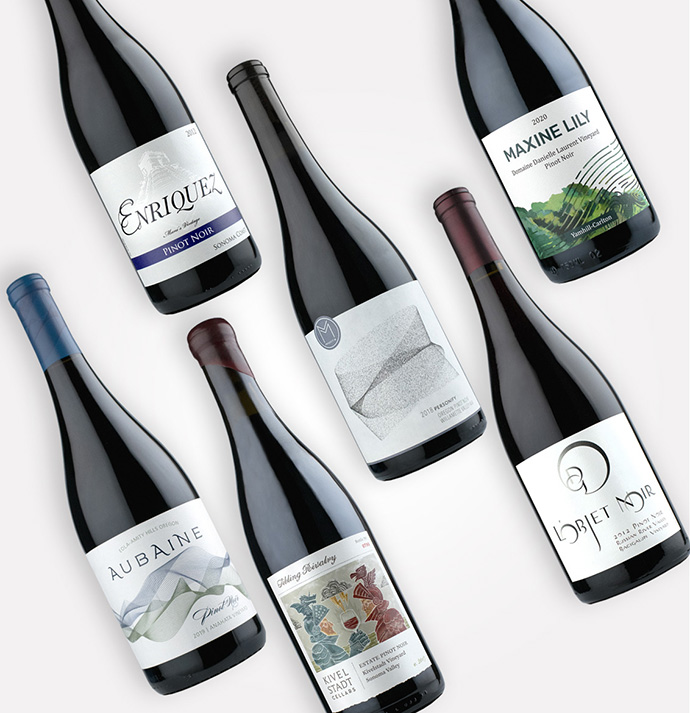What is cool climate viticulture and why does it matter?
Like people, grapes have climates they prefer, and they’ll show their displeasure by not ripening. There are white and red varieties that thrive in cooler climates, including Oregon standouts, Chardonnay, Pinot Gris, and Pinot Noir.
Cool climate white wines are sought for their high acid, fresh fruit, and citrus characters in a food-friendly lower alcohol frame. Cool climate reds, like Pinot Noir, are lighter in color with red fruit, spices, and lower alcohols. These reds are also exceptionally food-friendly and enjoyable.
It’s all in the latitude
On a world map, premium wine-growing regions in the northern hemisphere lie between 30°N and 50°N, with a corresponding band from 30° S to 50° S in the southern hemisphere.
 Source: Oregon Wine Board
Source: Oregon Wine Board
Oregon is located between the 42nd and 46th parallels, within the preferred latitudes for viticulture, yet still an area considered a cool climate and marginal for fine wine grapes. In marginal climates, the grapes need some help to thrive, and thrive they do! Cool climate viticulture areas produce some of the most celebrated wines globally, including Champagne, Bourgogne, and Riesling from the Mosel.
What makes a cool climate?
There is a progression from the cool Champagne region to the heat of Lodi, California, when looking at the average growing season temperature chart. It’s clear that Oregon is not a simple story—with its cool conditions in the Willamette Valley, intermediate in Southern Oregon, and warm conditions further east in the Walla Walla Valley.
 Source: Oregon Wine Board
Source: Oregon Wine Board
A cool climate can be affected by latitude, wind, and topography/elevation. Oregon’s northern latitude provides additional daylight, up to 15 hours in the summer growing season. Long growing days allow grapes to build complex flavor slowly in cool morning and evening temperatures. Temperatures drop significantly at night, preserving acidity in the grapes.
 Source: Oregon Wine Board
Source: Oregon Wine Board
Winds give and take
Northerly wine-growing areas have a cool climate with warm, dry summers and cold, wet winters with ocean effects in both seasons. In summer, cooling winds off the Pacific Ocean flow through gaps in the coastal mountain ranges and temper summer heat. In winter, the mountains protect the vineyards from frigid Pacific winds. This is true in the Willamette Valley.
Mountains give and take too
The mountains also provide high elevation sites where cool climate varieties can grow in areas that may be much hotter than they prefer, like Southern Oregon AVAs. In otherwise cool locations, high elevation sites can create bowls or amphitheaters that focus heat and promote enhanced ripening for cool climate grapes or even allow grapes usually needing more heat to grow.
Learn more about Oregon wines
5 Oregon winemakers to know for Oregon Wine Month
10 things we love about Oregon wine country
We’re enjoying Oregon sparkling wine
Oregon Chardonnay’s engaging styles
Let them drink Oregon Pinot Noir!
Delight is in the details – Northern Oregon terroir
Delight is in the details – Southern Oregon terroir
